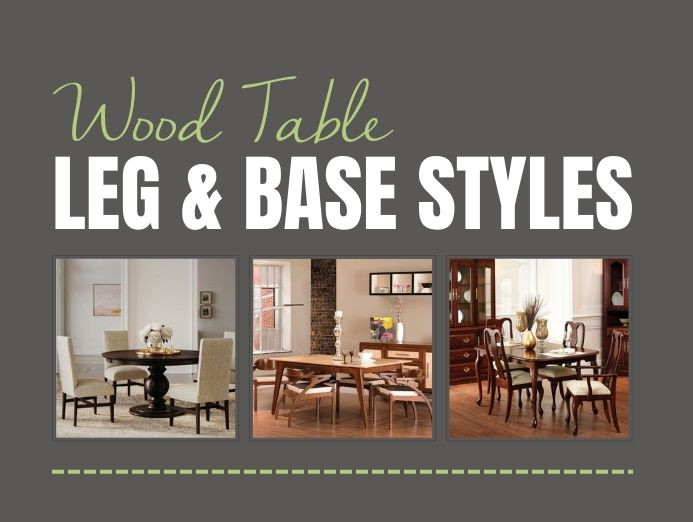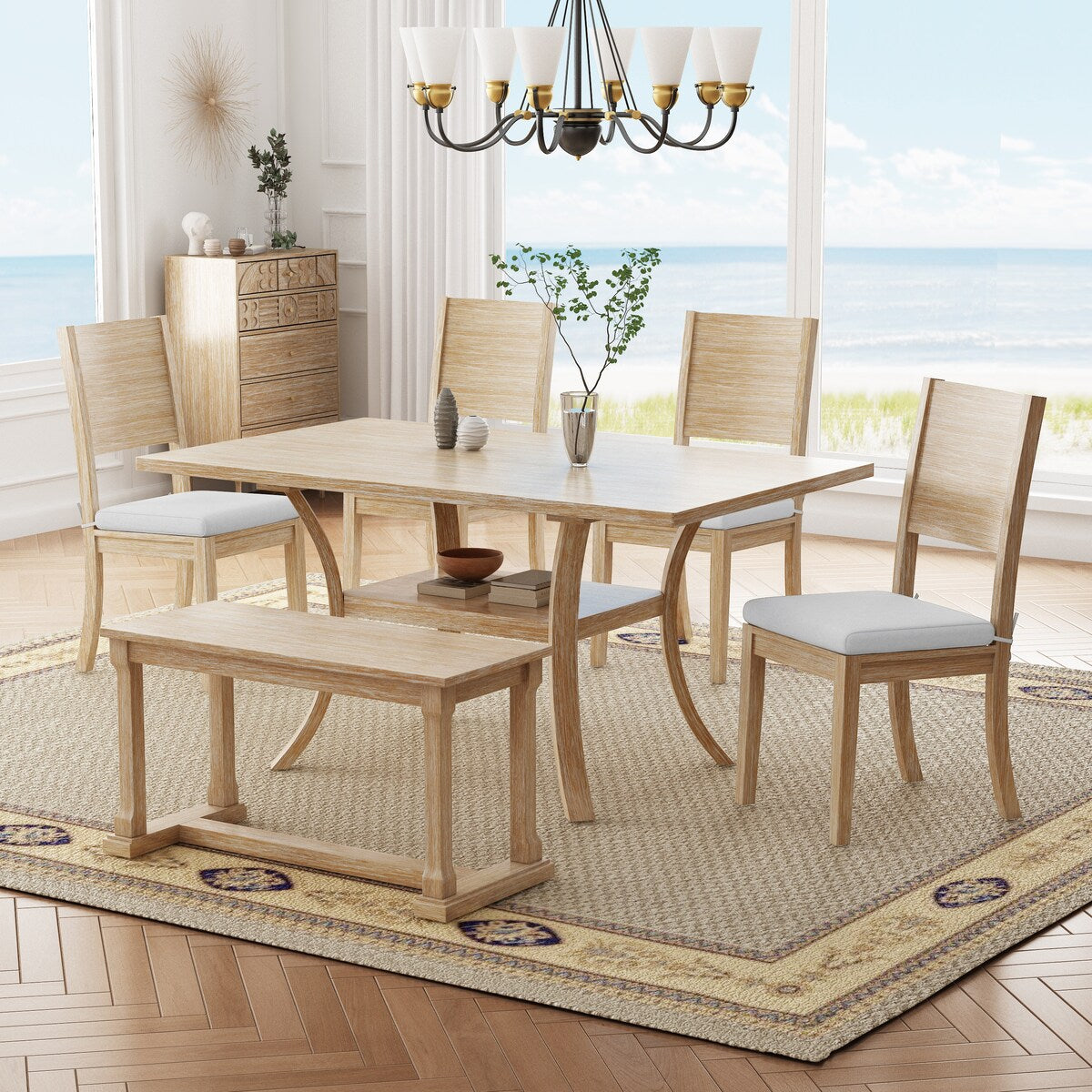Dining Room Table Legs: A Guide to Selecting the Right Style for Your Home
Dining Room Table Legs: A Guide to Selecting the Right Style for Your Home
Blog Article
From Traditional to Modern: Locate the Perfect Eating Room Table Legs for Your Design
The selection of dining-room table legs plays a pivotal duty in defining the total character of your room, connecting the gap between typical craftsmanship and contemporary aesthetic appeals. While traditional styles such as cabriole and transformed legs evoke a sense of timeless refinement, modern styles like barrette and geometric options offer a chance for striking visual rate of interest. Reviewing the ideal balance between these designs requires a nuanced understanding of your existing design and personal preference. As you think about these components, the question continues to be: just how can you perfectly incorporate these varied leg styles to develop a harmonious eating experience?
Understanding Table Leg Styles
The range of dining space table leg designs can significantly influence both the looks and capability of the room. Each leg design contributes unique visual elements and practical features, dealing with varied style preferences and usage requirements. Understanding these designs is critical for picking the appropriate eating table that straightens with your overall interior decoration vision.
For example, tapered legs provide a clean, classic appearance that can improve a space's elegance, while pedestal bases provide security and take full advantage of legroom, making them suitable for smaller rooms. Hairpin legs, a hallmark of mid-century modern style, introduce an industrial style, enabling a ventilated, open feeling. In a similar way, trestle legs evoke rustic beauty, providing robust support and a sense of eternity.
Wood legs can bring warmth and texture, whereas metal alternatives frequently communicate a streamlined, contemporary ambiance. Eventually, understanding table leg styles is important for developing a natural dining area that mirrors personal style while making certain practicality and comfort.
Standard Table Leg Options
When selecting dining-room table legs, traditional options commonly symbolize timeless beauty and craftsmanship. These styles mirror a rich heritage and a commitment to high quality, making them ideal for those that appreciate traditional aesthetics.
One of the most famous traditional leg designs is the cabriole leg, identified by its elegant bent shape. This style commonly includes attractive makings and is most commonly discovered in Queen Anne and Chippendale furniture. One more prominent option is the transformed leg, which flaunts a collection of smooth, rounded forms that supply a timeless appearance while preserving stability.
In addition, the straight leg, while straightforward, supplies a durable and basic structure that can blend perfectly with a selection of tabletop designs. For those attracted to ornate outlining, claw-and-ball feet legs evoke a sense of majesty and can offer as a magnificent focal point in any kind of dining space.
Finally, pedestal bases, although not purely legs, offer an alternative conventional choice that enables adequate legroom and can be magnificently carved. Each of these traditional leg designs adds to the total ambiance of a dining-room, marrying function with aesthetic allure.

Modern Table Leg Styles
Modern table leg designs visit homepage provide a diverse variety of styles that emphasize tidy lines and ingenious products. These designs frequently focus on functionality while acting as this website striking focal factors within a dining room. Minimalist aesthetics are common, with legs crafted from products such as steel, glass, and engineered timber, which add to a ventilated and modern feel.
One preferred design is the barrette leg, characterized by its slender, tapered framework that offers stability without overwhelming the tabletop (dining room table legs). This design is often discovered in mid-century modern furnishings and can effortlessly enhance different eating table shapes. An additional trend is making use of geometric forms, where legs may tackle angular or asymmetrical types, including visual passion and a touch of artistry

Mixing Designs for One-of-a-kind Rooms
Usually, property owners seek to create one-of-a-kind eating areas that reflect their personal style by mixing numerous style aspects. This approach visit the website permits the consolidation of diverse appearances, causing a harmonious yet distinctive atmosphere. As an example, pairing a rustic wood table with smooth, contemporary metal legs can produce a distinctive comparison that raises the area's general charm.
In addition, integrating vintage table legs with contemporary tabletops can stimulate a feeling of background while preserving a modern-day perceptiveness. Such combinations not just showcase specific preference yet also urge imagination, allowing home owners to curate a room that feels both individual and inviting.
Color plays a vital function in this blending process; picking table legs that match or comparison with the existing color system can improve aesthetic rate of interest. As an example, whitewashed legs can soften the boldness of a dark table surface area, creating a balanced visual.
Tips for Choosing the Right Legs
Choosing the right table legs is essential for accomplishing both capability and aesthetic charm in your eating area. Begin by taking into consideration the overall style of your area. Traditional settings gain from legs that include elaborate makings or transformed layouts, while contemporary areas may call for smooth, minimal designs.
Following, examine the elevation and security of the legs. dining room table legs. Standard dining tables range in between 28 to 30 inches in elevation, so guarantee the legs match this dimension for convenience. Additionally, robust materials, such as hardwood or metal, can improve security and long life
Review the leg form too-- choices include directly, tapered, or pedestal styles. Straight legs use a timeless look, while tapered legs can add a touch of beauty. Pedestal bases offer sufficient legroom and are suitable for smaller spaces.
Conclusion
In recap, choosing the perfect dining area table legs requires cautious consideration of both contemporary and typical designs. By balancing leg design, elevation, and material with the general decoration, a natural and welcoming environment can be achieved.
The selection of dining area table leg designs can considerably influence both the looks and performance of the room. Eventually, recognizing table leg styles is vital for producing a cohesive eating location that shows individual style while guaranteeing usefulness and comfort.One of the most legendary conventional leg designs is the cabriole leg, characterized by its elegant rounded shape. Straight legs use a traditional appearance, while tapered legs can include a touch of elegance.In summary, picking the suitable dining space table legs calls for cautious factor to consider of both modern and standard designs.
Report this page